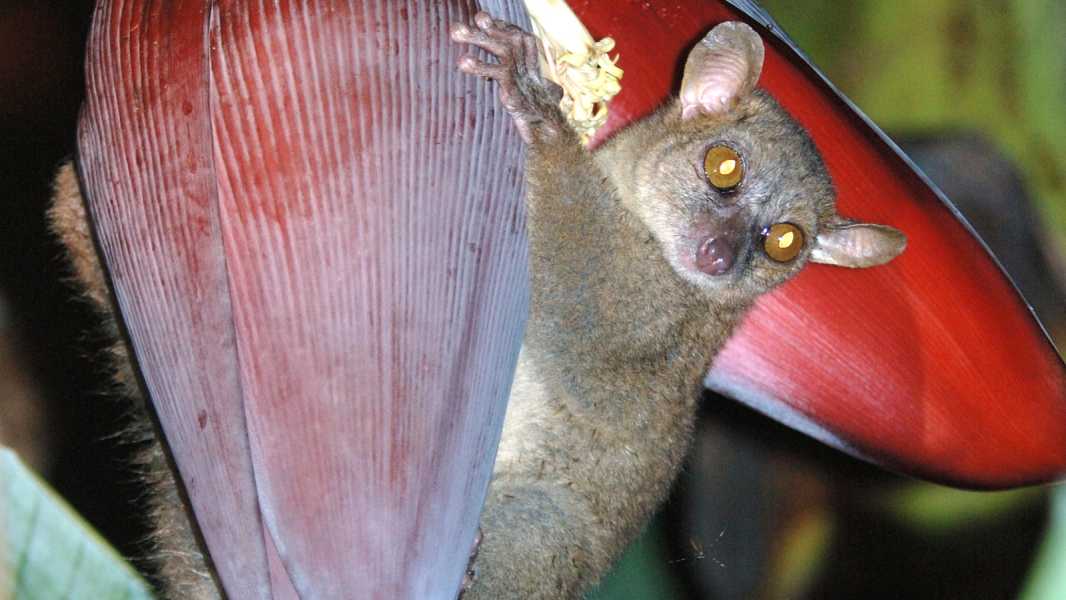
Northern giant mouse lemurs are able to mate year-round thanks to an abundance of food, and scientists believe this explains why males have such large testicles. (Image credit: Russell Mittermeier – Own work, CC BY-SA 4.0, https://commons.wikimedia.org/w/index.php?curid=37365386)
Name: Northern giant mouse lemur (Mirza zaza)
Habitat: Northern Madagascar.
Diet: fruits, flowers, nectar, tree sap and small insects.
Why it's impressive: Although northern giant mouse lemurs are small, they have a striking feature: surprisingly large testicles. These primates weigh only about 10 ounces (300 grams), but have the highest testicle-to-body-weight ratio of any primate, with their testicles accounting for about 5 percent of their total weight.
Found in the forests of the Ampasindava Peninsula in northwestern Madagascar, these nocturnal lemurs grow to about 10 inches (25 centimeters) long, not including the tail.
Only discovered in 2005, they have large, round, reflective eyes that allow them to see in low light. Their long, bushy tails help them maintain balance when jumping between trees, and their large, thin ears help them pick up the sounds of predators.
However, it is their abnormally large testicles that make them stand out from the others.
If humans had a similar ratio, their testicles would be the size of grapefruits, according to New Scientist. These lemurs' testicles are so large that they often get injured when jumping and swinging between tree branches – an unfortunate result of their physical characteristics.
The reason these lemurs have such large testicles is because they have a polygynandrous mating system, where males and females have multiple partners. Because males face intense competition to fertilize females, they have evolved larger testicles to produce more sperm. More sperm means they can make larger ejaculations and mate more often.
Unlike many other lemur species, northern giant mouse lemurs do not have a distinct mating season, so they reproduce year-round. Researchers believe this is due to the constant availability of nutritious food. As a result, their testicles remain huge all year round.
When females are ready to mate, they make sounds to attract males. They give birth to one young after about three months, but because they can mate all year round, they may have two or three young per year. Females are responsible for caring for the young, which reach maturity at about one year of age.
Northern giant mouse lemurs build nests high in trees to protect themselves from predators and adverse weather conditions such as monsoons. They form communal sleeping nests that can accommodate up to eight lemurs, including several males and individuals of different ages, which is an unusual social behavior. It is not known exactly why they do this, but it may help them conserve heat during the colder months and therefore save energy.
TOPICS amazing animals

Lydia SmithSocial Link NavigationScience Writer
Lydia Smith is a health and science journalist who has worked for both the UK and US. She is studying for an MA in Psychology at the University of the Eye
Sourse: www.livescience.com





